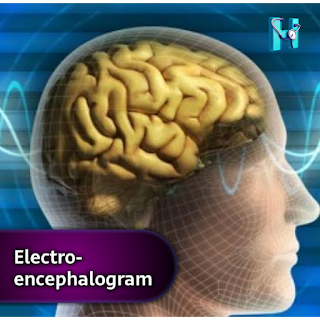In the realm of neuroscience, Electroencephalogram (EEG) stands as a remarkable tool, allowing us to peer into the intricate dance of electrical signals within the human brain. This article aims to demystify EEG, breaking down its fundamentals, applications, and significance in the world of medical diagnostics and research.
Unveiling the Brain's Electrical Symphony
At its core, EEG records the electrical activity generated by the brain's neurons. These electrical impulses create patterns known as brain waves, which can be categorised into different frequencies. Delta waves, theta waves, alpha waves, beta waves, and gamma waves each play a unique role in our cognitive processes.
Alpha Waves: Neural oscillations in the frequency range of approximately 8 to 13 Hertz (Hz), commonly associated with a relaxed and alert state, often observed during calm wakefulness and meditation.
Beta Waves: Higher-frequency brain waves ranging from about 14 to 30 Hertz (Hz), linked to active mental engagement, concentration, and alertness, prevalent during problem-solving and decision-making.
Gamma Waves: Fast brain waves exceeding 30 Hertz (Hz), associated with heightened cognitive functions, memory recall, and information processing, often observed during tasks that demand high mental effort.
Diagnosing Disorders and Beyond
EEG serves as a crucial diagnostic tool for various neurological conditions. From epilepsy and sleep disorders to brain injuries, EEG helps clinicians pinpoint irregularities in brain activity. Its non-invasive nature and ability to capture real-time data make it an invaluable asset in healthcare.
EEG in Monitoring Sleep Patterns
One fascinating application of EEG is in the realm of sleep studies. By monitoring brain waves during different sleep stages, researchers gain insights into sleep architecture, aiding in the diagnosis and treatment of sleep disorders. Discover how EEG plays a pivotal role in unravelling the mysteries of our nightly rest.
Advancements in EEG Technology
Over the years, EEG technology has evolved significantly. Early analog EEG machines have given way to sophisticated digital systems, offering higher resolution and advanced signal processing. Explore the technological strides that have enhanced the accuracy and efficiency of EEG recordings.
The Future of EEG
Beyond medical applications, EEG is venturing into exciting territories like neurofeedback and brain-computer interfaces (BCIs). Learn how EEG is contributing to the development of technologies that allow individuals to control computers and prosthetics using their thoughts.
Demystifying Common Misconceptions
Misconceptions surrounding EEG abound, often leading to confusion. This section aims to dispel common myths and provide clarity on the capabilities and limitations of EEG technology. Understanding what EEG can and cannot reveal is essential for appreciating its role in neurological assessments.
Resources for Further Exploration
For those intrigued by the intricacies of EEG, numerous resources can serve as valuable guides. Whether you're a student, researcher, or simply curious, recommended books, online courses, and academic journals are highlighted to facilitate a deeper understanding of EEG and its applications.
In conclusion, Electroencephalogram remains an indispensable tool in unravelling the complexities of the human brain. From diagnosing neurological disorders to exploring the frontiers of neurotechnology, EEG continues to shape our understanding of the mind. As technology advances and research progresses, the future promises even more fascinating revelations about the brain's electrical symphony.








.jpeg)

